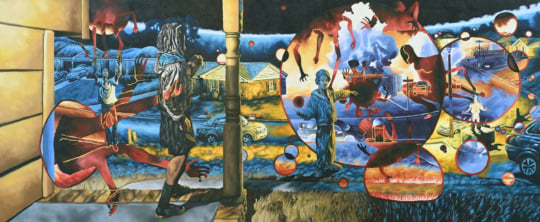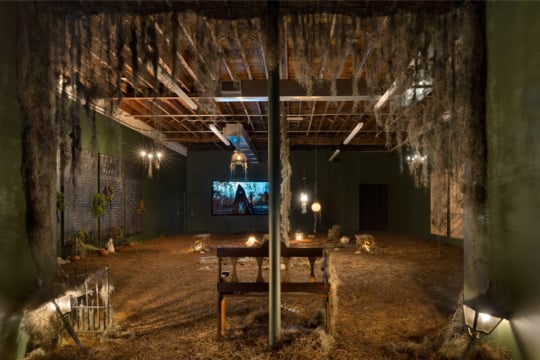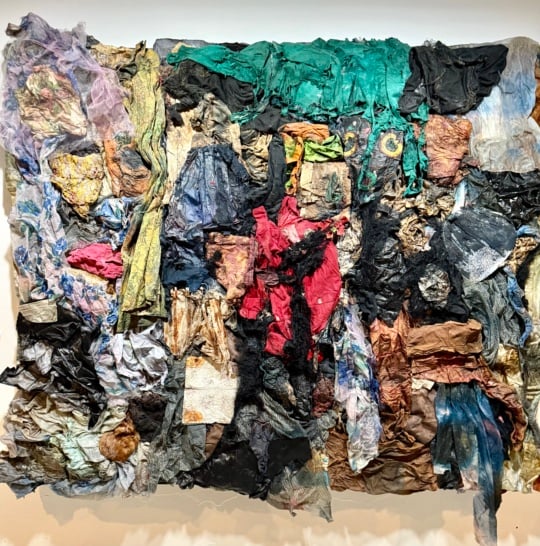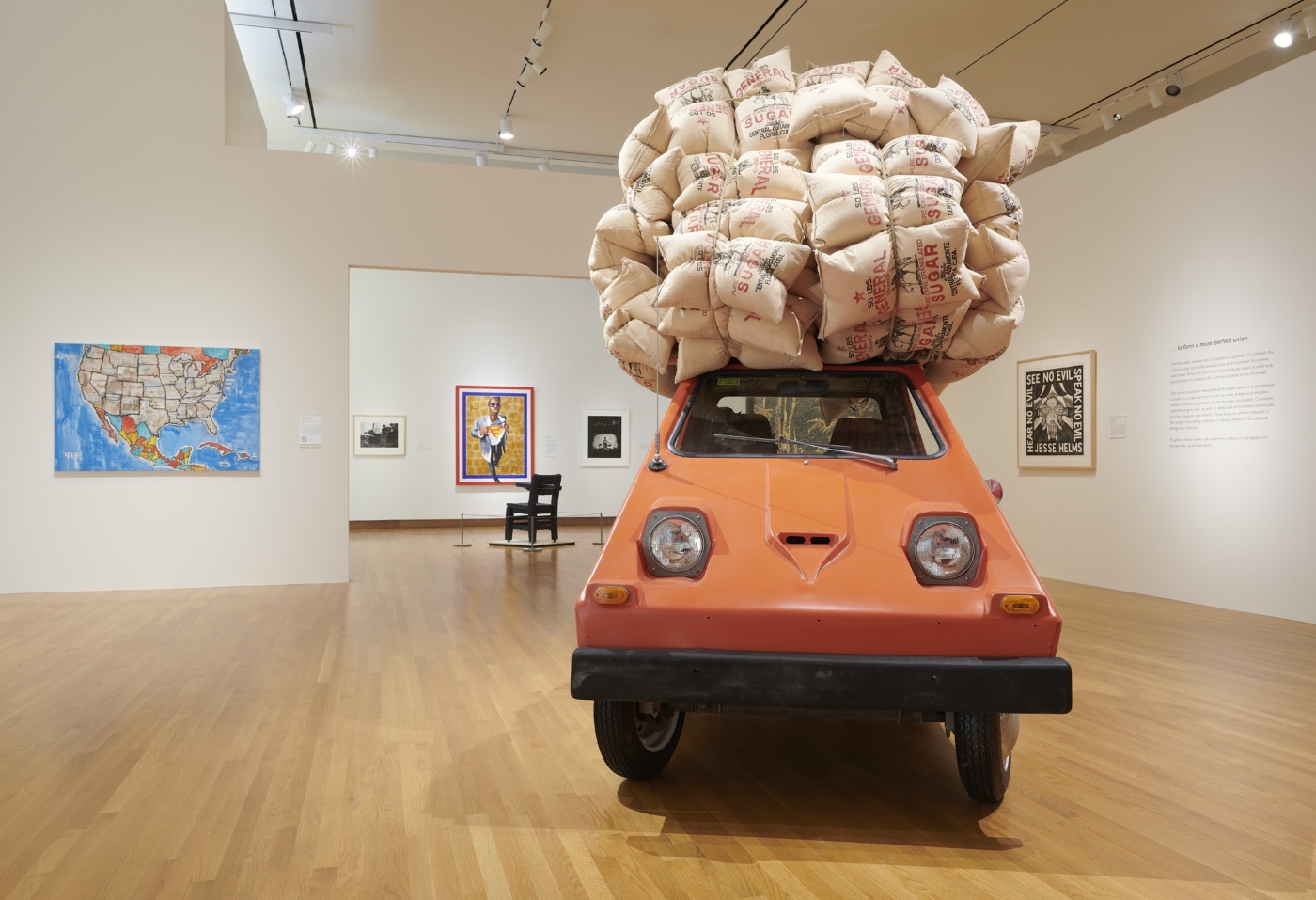
As Americans head to the polls for what is arguably the most important election in our lifetime, questions concerning the most foundational elements of democracy are once again on the ballot. By dawn’s early light, a show that pulls from the Nasher’s existing collection, is organized by Xuxa Rodríguez, the Patsy R. and Raymond D. Nasher Curator of Contemporary Art, with support from Julianne Miao, Curatorial Assistant, reminds visitors of America’s polyphonic voice, a choir of stories in many languages, patois, and dialects, and undeniable power therein. As the exhibition statement articulates, the show speaks to the importance of the constitution to American life, particularly the Civil Rights Act of 1964 and the Voting Rights Act of 1965. The light the title describes points visitors to the most influential force of liberty: truth.
At the exhibition’s entrance, viewers receive a compelling snapshot of the breadth and depth of the collection. The curators took special consideration to include artists and works that connect to North Carolina. North Carolina is a swing state in this year’s election. State government and its decisions feature prominently in the news and often have national reverberations. North Carolina-based creatives like artist Kennedi Carter, writer Alexis Pauline Gumbs, and scholars like Tressie McMillian Cottom are vocal about the beauty and significance of North Carolina’s history and culture as a main character in the larger story of America.
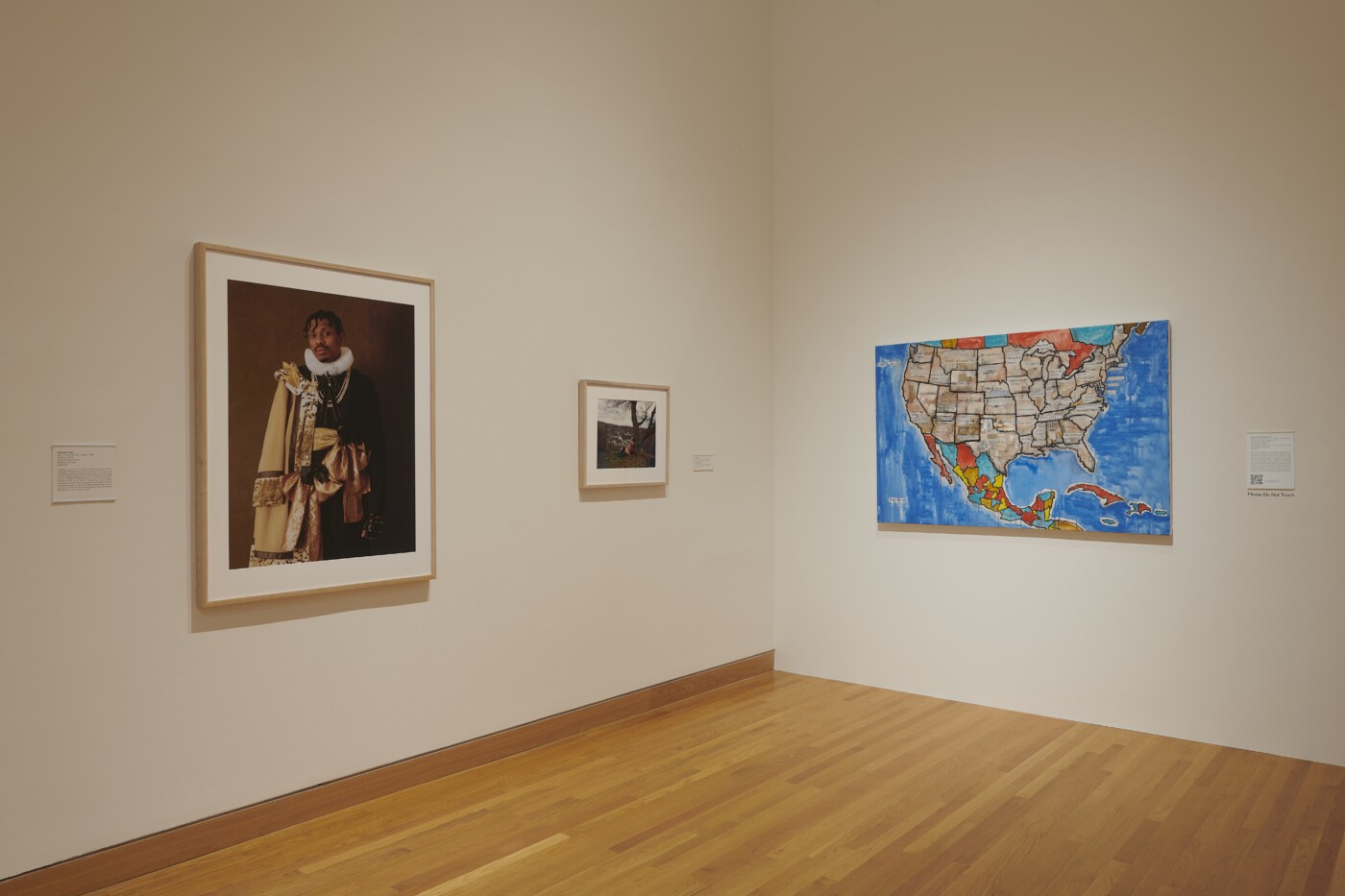
Kennedi Carter’s time-bending portrait, Shahqueel (2020), recalls the curators’ special consideration for artists and works that connect to North Carolina. Carter, a portrait photographer and writer based in Durham, captures the simultaneously mundane and sensual beauty of Black life. In Shahqueel, from her 2020 solo exhibition entitled Flexing/New Realm at CAM Raleigh, the subject is dressed in a commanding sixteenth century-inspired costume styled with contemporary elements. One may imagine the young model being envied and emulated by crowds in 1570s London or 1970s Harlem, encapsulating the undeniable power of Black people expressing their whole selves. In an interview with Elizabeth Mathis Cheatham director of the digital publication Matrons & Mistresses, Carter shared that she had learned that in the 1590s, the Queen sought to expel Black people from her realm, a deepening of the stigmatization, exploitation, and erasure experienced by African and Black British people in the country. A revelation to Carter, she said, “I think it made it even more interesting to kind of erase that and to not necessarily rewrite history, but to look back on it and address it for what it is in order to move forward.”1 Through the image, Carter both exposes the intentional erasure bonded with the exploitative economy of colonial powers, but liberates her subjects, and in turn the viewer, to take back the spaces stolen from them.
In Roger Brown’s Fear No Evil (1991), one may find the antithesis of Carter’s Shahqueel. The black and white lithograph depicts former North Carolina senator Jesse Helms with hands reaching to cover his mouth, ears, and eyes. The words “HEAR NO EVIL, SEE NO EVIL, SPEAK NO EVIL, JESSE HELMS.” While the piece contains signature elements, like the leaf-shaped brush strokes in the background, Fear No Evil marks a change in tone from Brown’s earlier works. The deepening of the color palette and the artist’s focus on Southern social and political life communicates a more urgent and reflective message leading up to his death due to complications related to AIDS in 1997.
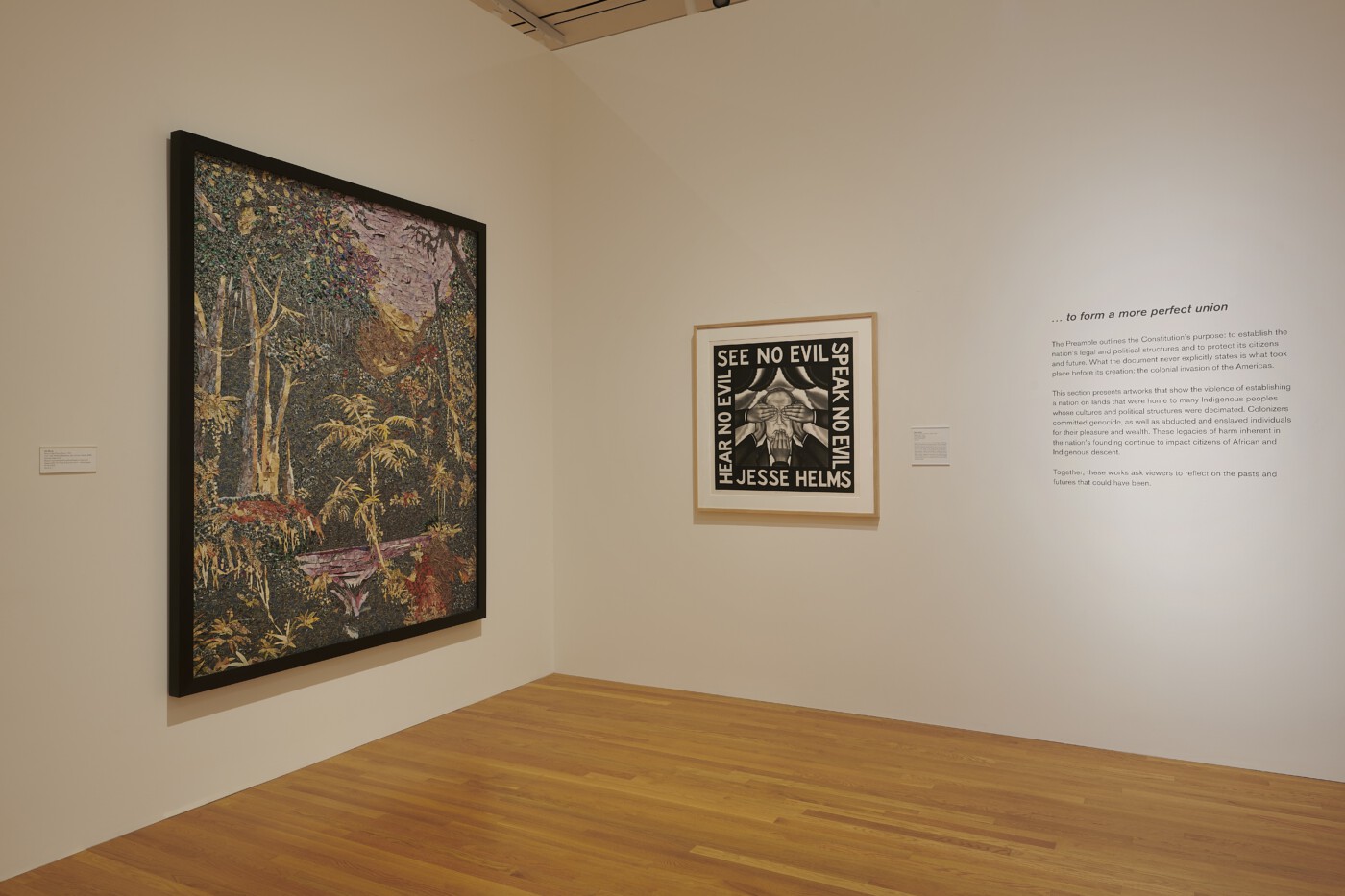
During his thirty-year tenure, Helms was nicknamed “Senator No” for consistently obstructing legislation expanding the 1964 Civil Rights Act protections, which he claimed was “the single most dangerous piece of legislation ever introduced in the Congress.”2 One of his most infamous actions in office was the 1973 Helms Amendment to the Foreign Assistance Act, which states, “no foreign assistance funds may be used to pay for the performance of abortion as a method of family planning or to motivate or coerce any person to practice abortions.”
Brown, a gay man born and raised in the American South in a religious home, was known for work that explored the tensions between the South’s bucolic imagery in contrast with its violent political realities. In 1988, three years before he made Fear No Evil, Brown learned he was HIV positive. By then, President Ronald Reagan had signed the Helms AIDS Amendments into law, “a series of amendments…that prohibited the use of federal funding for any HIV/AIDS educational materials that would “promote or encourage, directly or indirectly, homosexual activities.” Brown may be using the phrase surrounding Helms’s portrait to both shame him and his supporters for senseless agony of people all over the world caused by his prejudiced policies against artists, women, and nearly everyone who was not a cisgendered, straight, white, Christian male.
The exhibition statement invites viewers to ask themselves, “What do we hold dear, and how are we using our voices to protect those things—our values—when we go to the polls in each election?” November 5th is, above anything else, a declaration from each voter regarding the country they want the United States to become: the decaying corpse of a capitalistic oligarchy animated by white supremacy or a nation that finally promotes liberty and justice for all. Each of the thirty-eight artists whose work is included in this show provides thought-provoking and emotional windows into the places, people, and practices that have held America back, as well as those that will move toward a liberated future.

[1] Elizabeth Mathis Cheatham,. “Kennedi Carter.” Matrons & Mistresses, Elizabeth Mathis Cheatham, 15 Apr. 2020, www.matronsandmistresses.com/articles/2020/04/15/kennedi-carter. Accessed 28 Oct. 2024.
[2] Paulette Brown-Hinds. “Jesse Helms Was a Racist to the End.” Black Voice News, 9 July 2008, blackvoicenews.com/2008/07/09/jesse-helms-was-a-racist-to-the-end/. Accessed 1 Nov. 2024.

